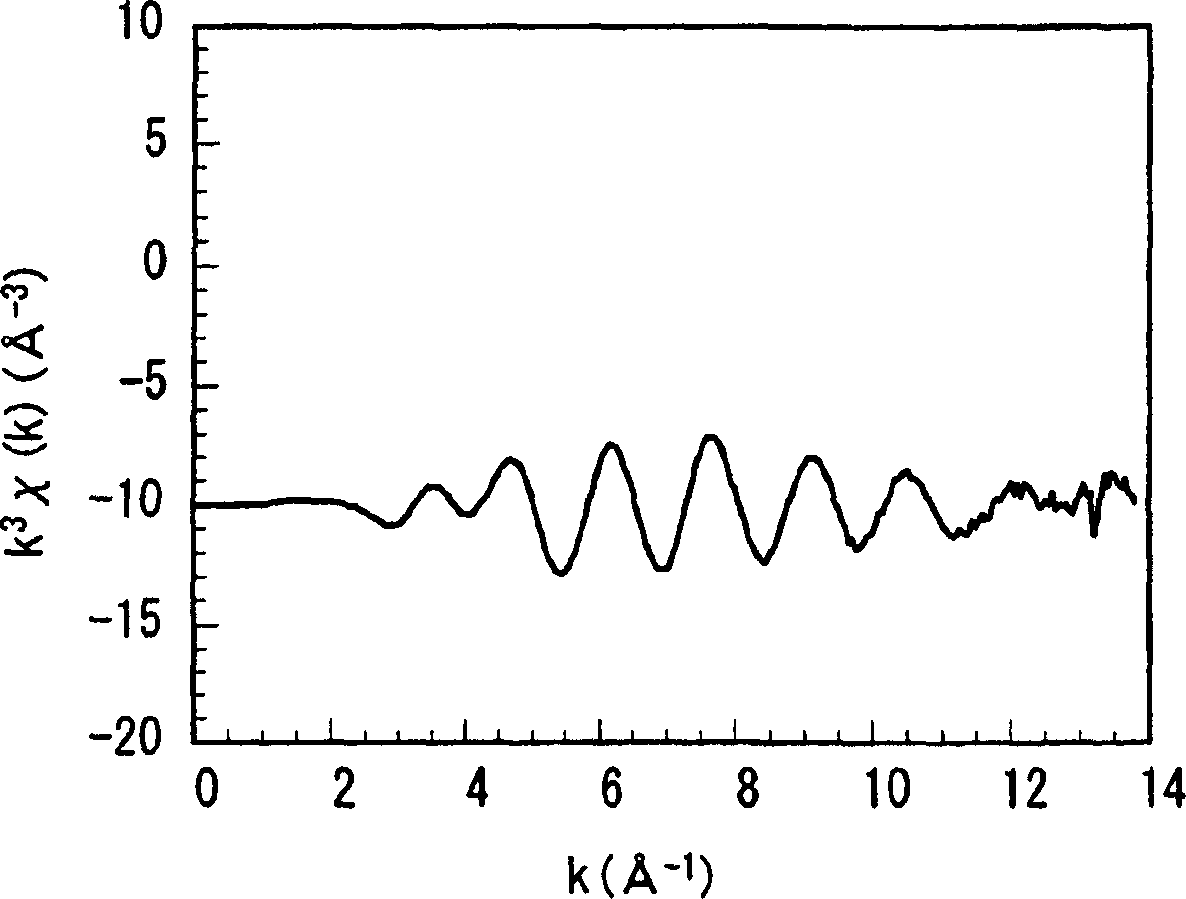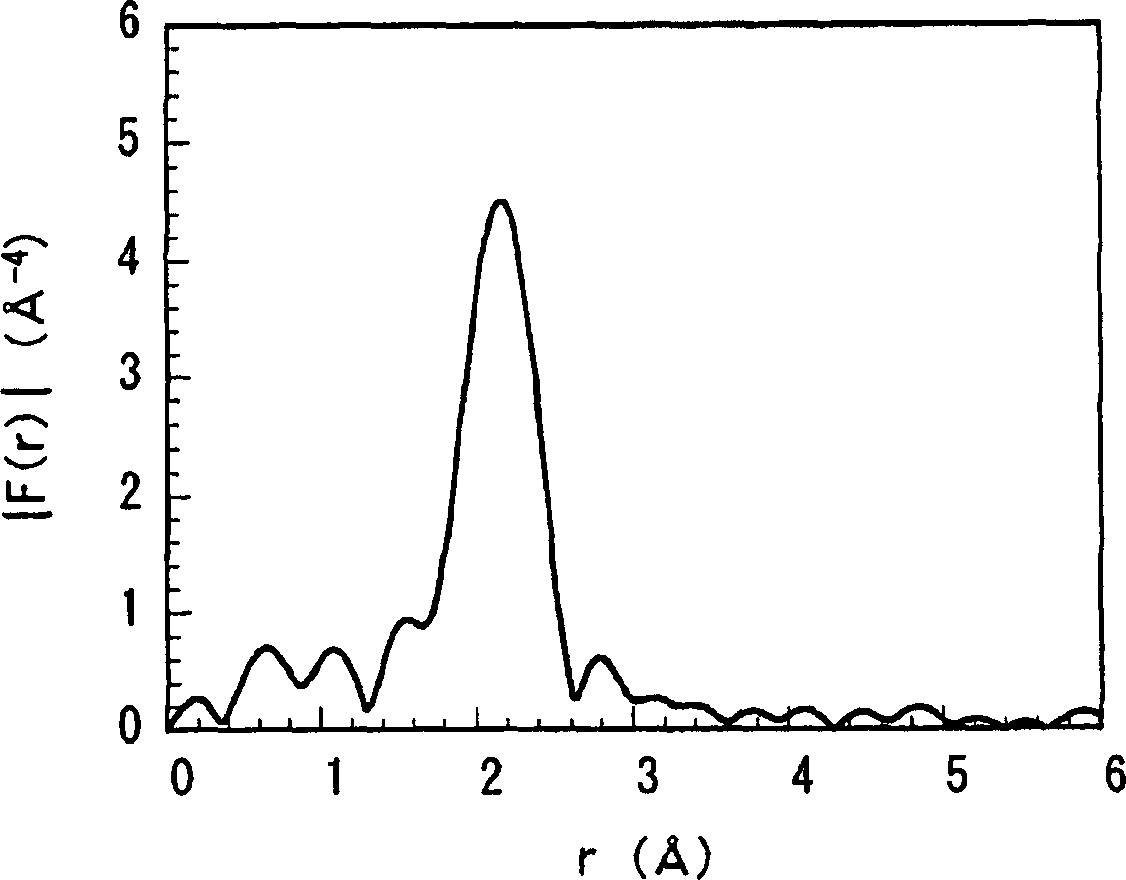Anode active material and battery
A negative electrode active material, battery technology, applied in the direction of active material electrodes, negative electrodes, battery electrodes, etc., to achieve the effect of improving cycle characteristics, high capacity, and superior cycle characteristics
- Summary
- Abstract
- Description
- Claims
- Application Information
AI Technical Summary
Problems solved by technology
Method used
Image
Examples
Embodiment 1-1 to 1-8
[0124] First, a negative electrode active material is formed. As raw materials, cobalt powder, tin powder, carbon powder, titanium powder, molybdenum powder, niobium powder, aluminum powder, germanium powder, phosphorus powder, bismuth powder, and indium powder were prepared. Next, in Example 1-1, cobalt powder, tin powder, and titanium powder were alloyed to form cobalt-tin-titanium alloy powder, and carbon powder was added thereto and dry-blended. In embodiment 1-2 to embodiment 1-6 and embodiment 1-8, cobalt powder and tin powder are alloyed to form cobalt-tin alloy powder, and carbon powder and molybdenum powder, niobium powder, aluminum powder, germanium powder , aluminum powder and phosphorus powder, or indium powder are added and dry mixed. In Examples 1-7, cobalt powder, tin powder and bismuth powder were alloyed to form cobalt-tin-bismuth alloy powder, and carbon powder was added thereto and dry-blended. The ratio of raw materials is shown in Table 1. Next, 20 g of...
Embodiment 2-1 and 2-2
[0145] The negative electrode active material and the secondary battery were formed as in Example 1-1, except that the synthesis conditions of the negative electrode active material were changed. The total rotation speed and run time were 300 rpm and 30 hours in Example 2-1, and 250 rpm and 25 hours in Example 2-2, respectively.
[0146] As comparative examples 2-1 to 2-4 with respect to Examples 2-1 and 2-2, negative electrode active materials and secondary batteries were formed as in Examples 2-1 and 2-2, except that the synthesis conditions of the negative electrode active materials were changed outside. The total rotation speed and running time were 150 rpm and 30 hours in Comparative Example 2-1, 200 rpm and 30 hours in Comparative Example 2-2, 250 rpm and 15 hours in Comparative Example 2-3, and 250 rpm and 20 hours in Comparative Examples 2-4, respectively.
[0147] For the negative electrode active material, XPS was performed, and the resulting peaks were analyzed. ...
Embodiment 3-1 and 3-2
[0151] A secondary battery was fabricated as in Example 1-1, except that the negative electrode active material was synthesized by changing the raw material ratios of cobalt, tin, carbon, and titanium as shown in Table 5. Specifically, the ratio of Co / (Sn+Co) was set at a constant value of 37% by weight, the raw material ratio of titanium was set at a constant value, and the raw material ratio of carbon was set at 10% by weight or 30% by weight.
[0152] Raw material ratio (weight%)
Analysis value (weight%)
capacity
(mAh /
cm 3 )
300th time
Loop content
Volume retention
(%)
co
sn
C
Ti
co
sn
C
Ti
Example 3-1
31.8
54.2
10.0
4.0
30.5
53.6
9.9
4.0
143
81
Example 1-1
28.1
47.9
20.0
4.0
27.8
47.7
19.8
4.0
...
PUM
 Login to View More
Login to View More Abstract
Description
Claims
Application Information
 Login to View More
Login to View More - R&D
- Intellectual Property
- Life Sciences
- Materials
- Tech Scout
- Unparalleled Data Quality
- Higher Quality Content
- 60% Fewer Hallucinations
Browse by: Latest US Patents, China's latest patents, Technical Efficacy Thesaurus, Application Domain, Technology Topic, Popular Technical Reports.
© 2025 PatSnap. All rights reserved.Legal|Privacy policy|Modern Slavery Act Transparency Statement|Sitemap|About US| Contact US: help@patsnap.com



